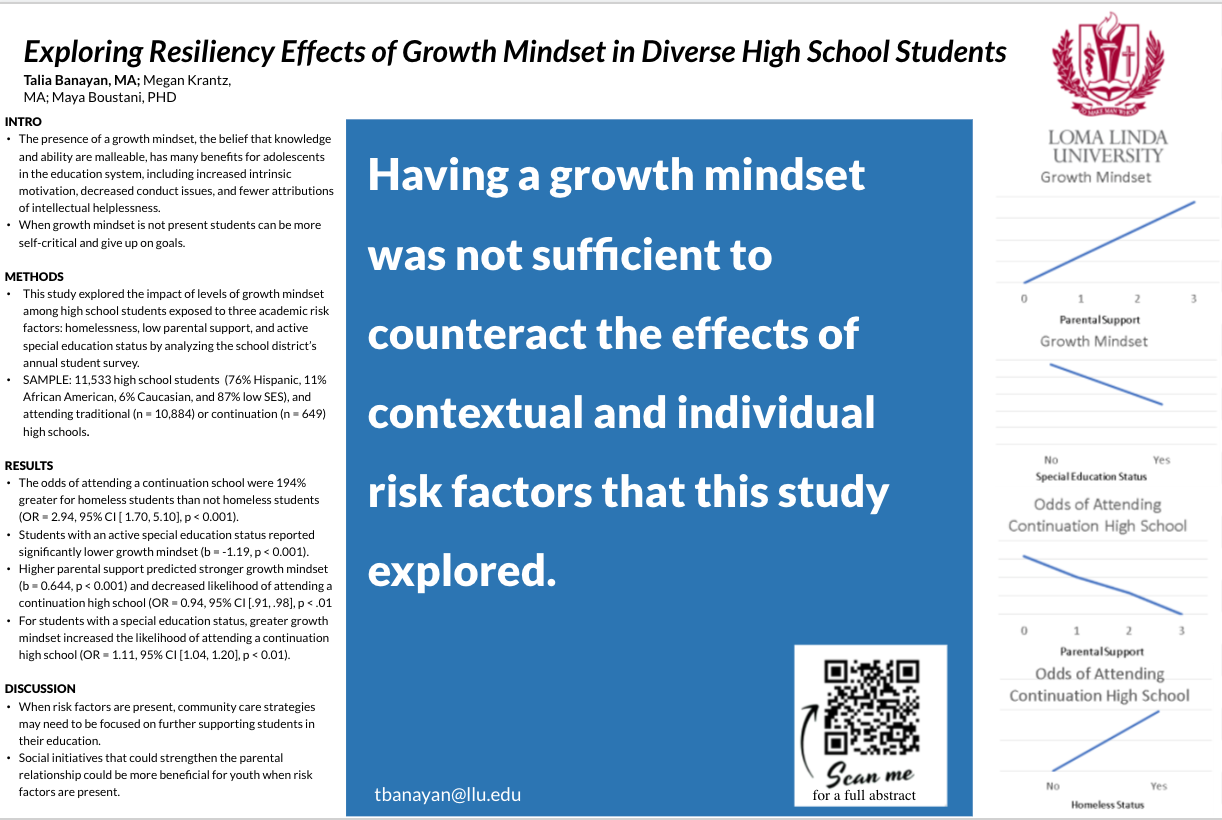Exploring Resiliency Effects of Growth Mindset in Diverse High School Students

Introduction: The presence of a growth mindset, belief that knowledge and ability are malleable, has many benefits for adolescents in the education system, including increased intrinsic motivation, decreased conduct issues, and fewer attributions of intellectual helplessness. Students who embody a growth mindset can perceive challenging experiences to be opportunities for learning and growth, which may facilitate academic success despite socioeconomic hardship and racial/ethnic disparities in educational attainment. When a growth mindset is not present, students can be very critical of themselves and give up on their goals. The current study will examine the relationships between educational and home environment factors and students’ growth mindset to better support diverse high school students.Methods: Data were gathered from a sample of 11,533 high school students in Southern California who were from diverse backgrounds (76% Hispanic, 11% African American, 6% Caucasian, and 87% low SES), and attending traditional (n = 10,884) or continuation (n = 649) high schools. This study explored the impact of levels of growth mindset among high school students exposed to three academic risk factors: homelessness, low parental support, and active special education status. We examined differences in students’ growth mindset between traditional and continuation high school samples with a t-test. We then conducted a logistic regression to determine if students’ level of growth mindset predicted their likelihood of attending a traditional or continuation high school. We then examined the impact of risk factors on students’ growth mindset with a multiple linear regression with the three risk factors entered simultaneously. Lastly, we analyzed if growth mindset would moderate the likelihood of attending a continuation high school if risk factors were present by using a logistic regression.Results: We found no difference in levels of growth mindset between school type (p > .05) nor the number of risk factors the student was exposed to (p > .05). The odds of attending a continuation school were 194% greater for homeless students than not homeless students (OR = 2.94, 95% CI [ 1.70, 5.10], p < 0.001). Students with an active special education status reported significantly lower growth mindset (b = -1.19, p < 0.001). However, higher parental support predicted stronger growth mindset (b = 0.644, p < 0.001) and decreased likelihood of attending a continuation high school (OR = 0.94, 95% CI [.91, .98], p < .01). Growth mindset did not moderate the effects of homelessness and low parental support on students’ likelihood to attend continuation high school, p > .05. However, for students with a special education status, greater growth mindset increased the likelihood of attending a continuation high school (OR = 1.11, 95% CI [1.04, 1.20], p < 0.01).Conclusion: Models of enhancing resiliency such as increasing growth mindset are beneficial in some cases, however when additional risk factors are present, community care strategies may need to be focused on further supporting students in their education. These findings suggest that social initiatives that could strengthen the parental relationship could be more beneficial for youth when risk factors are present.



